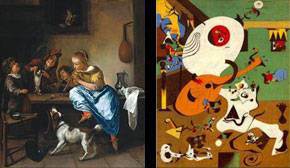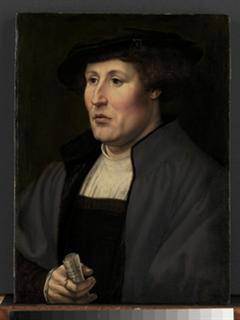
Jan Steen: ‘Children Teaching a Cat to Dance’ (a.k.a. ‘The Dancing Lesson’) and Joan Miro‘s ‘Dutch Interior’
Miró: The Dutch Interiors, at the Metropolitan The traveling exhibition Miró: The Dutch Interiors features Miró’s three ‘Dutch Interiors’ and the two Old Master paintings on which they are based
October 5, 2010–January 17, 2011
]]>
Source: Metropolitan Museum of Art
The exhibition brings together three paintings by Miró—Dutch Interior I (The Museum of Modern Art, New York), Dutch Interior II (Peggy Guggenheim Collection, Venice) and Dutch Interior III (The Metropolitan Museum of Art, New York)—that were based on two 17th-century works in Amsterdam’s Rijksmuseum. The Dutch paintings—The Lute Player (1661) by Hendrick Sorgh and Children Teaching a Cat to Dance (c. 1660–79) by Jan Steen—both feature a musician, an audience of one or more people, and a cat and a dog. When reinterpreted by Miró, the scenes undergo a complete metamorphosis.
When Steen’s humorous genre scene was transformed into the imaginative Dutch Interior II, Miró enlarged and focused on the animate figures—both human and animal—while de-emphasizing the inanimate objects. The cat is at the swirling center of Miró’s composition, and the noise and chaos of the dancing lesson are communicated through motion and rhythm.
In addition, a fourth picture, now in the collection of the Metropolitan Museum, will be included in the exhibition. The Potato was considered by Miró to be part of his Dutch Interior series, and obviously recalls his impressions in the Netherlands.
Although there is a long history of artists who sought inspiration in the work of other artists, this encounter between the Dutch Masters and one of the most esteemed avant-garde artists of the 20th century is both unexpected and rare. Through a selection of preparatory drawings that will also be displayed, viewers will see how Miró moved from representational sources to his own language.
Follow us on:


